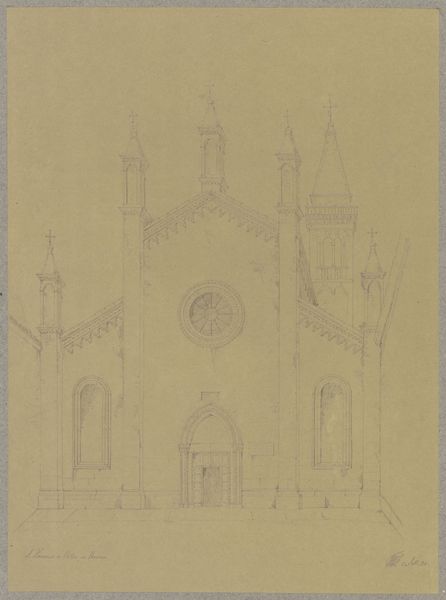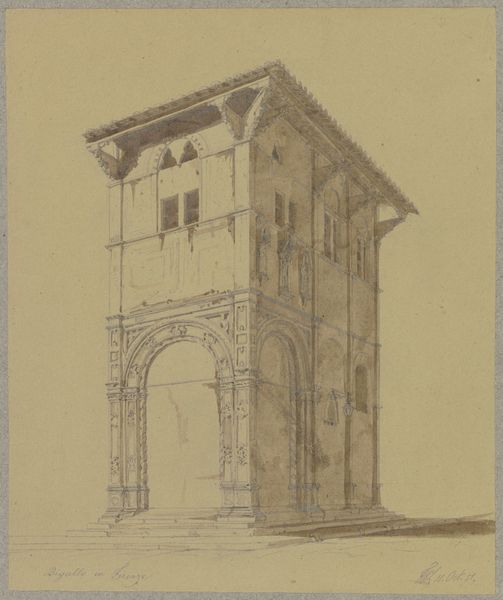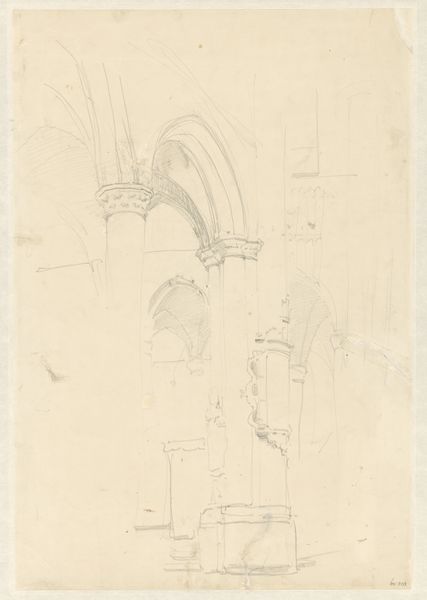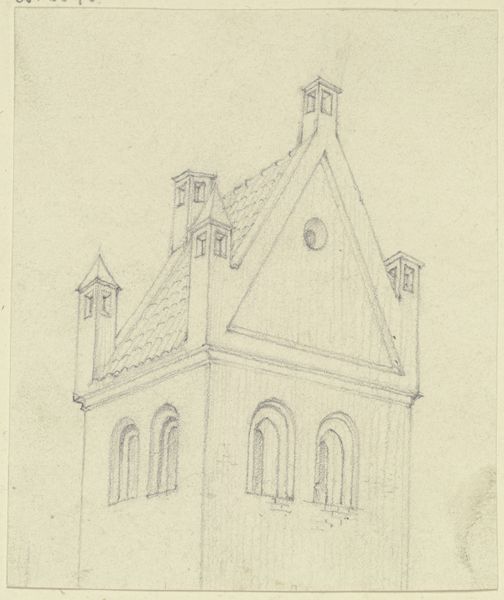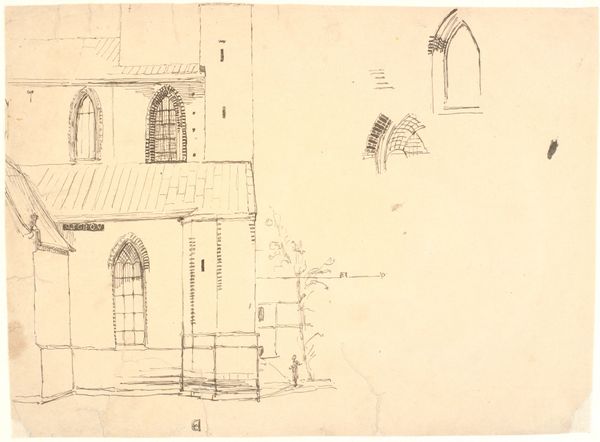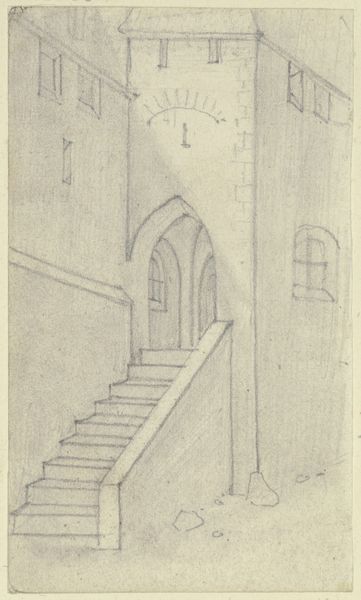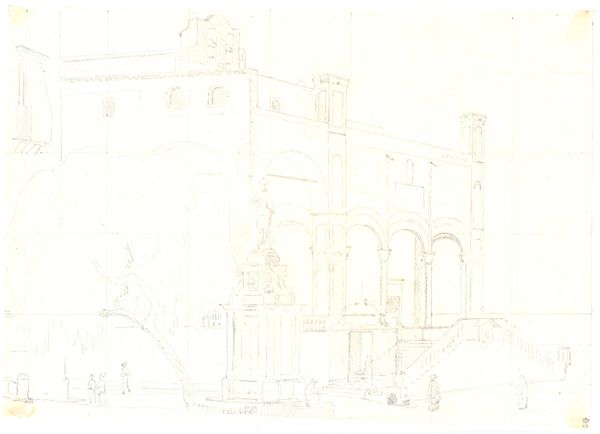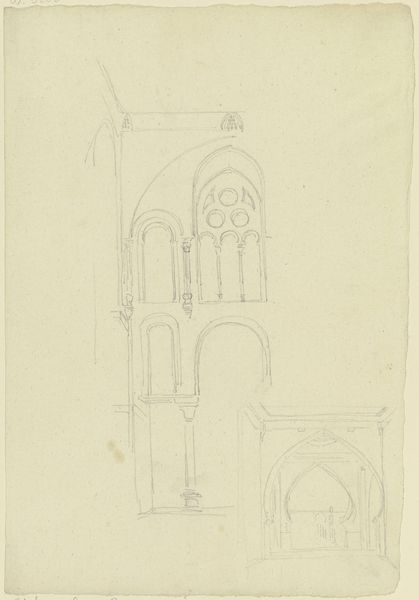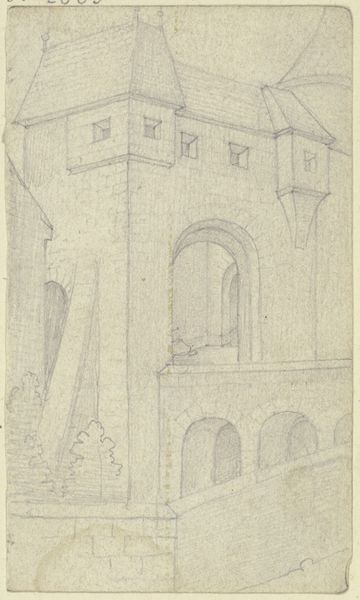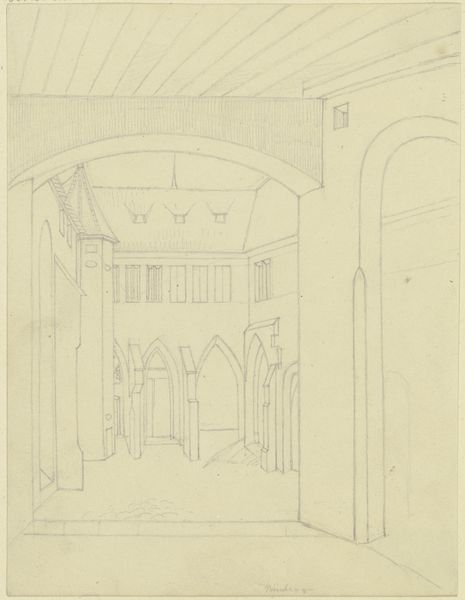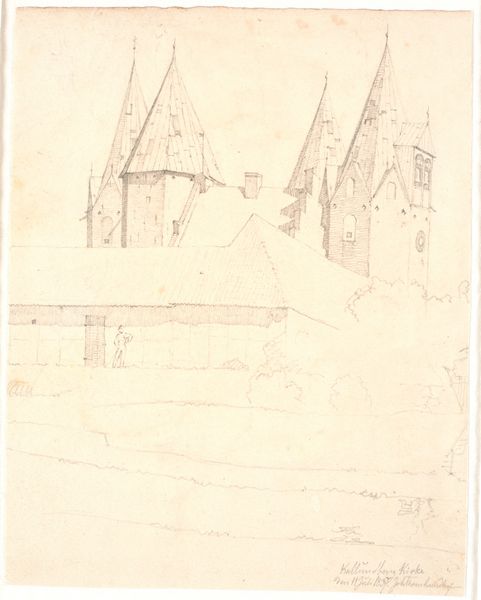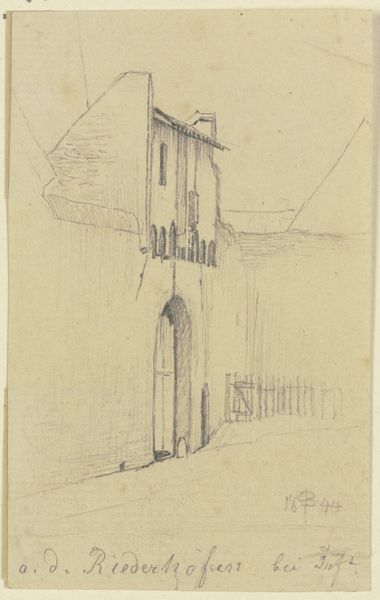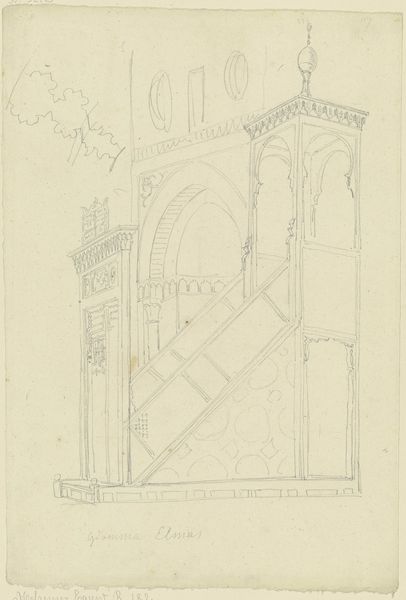
drawing, pencil, architecture
drawing
16_19th-century
landscape
pencil
architecture
realism
Copyright: Public Domain
Friedrich Wilhelm Ludwig made this pencil drawing of S. Pietro Martire in Verona. It presents a church in the Italian city of Verona with the gothic style tomb of Saint Peter Martyr above the entrance. The Gothic style was often favored in the 19th century for its associations with the medieval period, which was then perceived as a time of strong religious belief. The church would have functioned as an important public space where collective identities were shaped and reinforced. By focusing on architectural details, Ludwig directs our attention to the ways buildings embody and project cultural values. To fully appreciate a work like this, one must research the historical context of its creation. What was the artist's relationship to religious institutions? How did the building function as a symbolic representation of religious and civic power? Art history enables us to understand how artistic expression is always shaped by social and institutional forces.
Comments
No comments
Be the first to comment and join the conversation on the ultimate creative platform.
